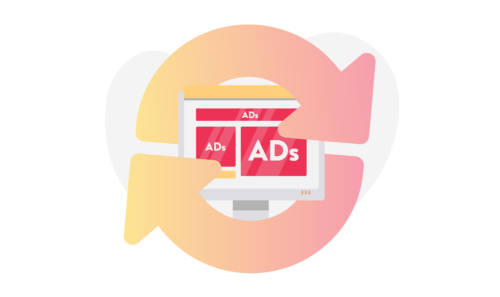How Google Adsense Works with WordPress?
Contextual advertising historically has been one of the most widely used ways of traffic monetization. In spite of the fact that it’s been shelved by the Programmatic market, it is still utilized by many small businesses; including bloggers dabbling with the prospect of generating some kind of financial reward for their efforts. Google AdSense is one of the most popular contextual advertising systems in the world, whereas WordPress remains one of the web’s most popular Content Management Systems (roughly ⅓ of all websites use it).
Taking this landscape into account, today we will discuss how these two work together. Being a blog owner myself, I started using AdSense back in 2006 and have continued to do so. So here I would like to share some of my experiences and approaches to using AdSense on WordPress.
AdSense on WordPress for Content and Search

The most commonly used AdSense tags involve simply the displaying of ads next to content on the page, where the content finds matching creatives. For example, if your blog is about travel, AdSense will most likely display ads related to hotels, air travel, restaurants and suitcases. Since most of the ads in AdSense are paid for in the CPC (Cost Per Click) model, you will achieve the best results when the ads are relevant to what the user is interested in.
AdSense on WordPress provides you with an option to either create ad units manually or to automatically insert them in the right spaces on your website. The former feature is useful when you want to have full control of your site and to be able to precisely select where and how you want the ads to be displayed. For example, AdSense gives you the ability to select those specific ad unit dimensions that will be most suitable for your web template.
Automatic ad insertion is useful when you want to save time and give Google the chance to optimize the setup on their end.
AdSense for Search (AFS), on the other hand, provides website owners with two useful features. The first one is the Custom Search Engine, which searches specific domains and displays ads next to the search results. Custom Search Ads are to be used when you have a search engine on your website (and WordPress does) and you want to display ads there as well.
To get the best results, you should use both standard ads and AFS.
Good places to put ads in the template
The general idea is to put ads where they can be seen (and have good viewability), noticed by the user, and clicked on. Ads not only need to be relevant to the user, but as mentioned earlier, they also need to be clicked on in order for the Publisher to be compensated for them.
Putting ads at the beginning of the content is one of the ideas which we advise you to explore. If you can insert them in the first paragraph of text (aligned left or right), or put them between the first and second paragraphs, you should see pretty good results.
Other places you should consider inserting ads in the template are:
- left or right columns, in between menu sections,
- left or right columns at the bottom, in a way that will keep the ads sticky and displayed on the screen when the user scrolls down,
- anchor ads, i.e. an ad unit fixed to the bottom of the screen.

Also, wherever you promote your own content (like in the “related articles” section), it’s worth testing the In-Feed ads. They can look similar to your content, consisting as they do of an image, title and short description. If you install these types of ads, you need to test not only the revenue they generate, but also assess whether they affect other website performance indicators, like the number of pageviews per one session. If the additional revenue doesn’t make up what you’ve lost due to changes in the user experience, you should consider getting rid of them.
Use Google Ad Manager if you’re planning to scale up
When your website gets bigger and pulls in more traffic, you should think about using Google Ad Manager to operate your AdSense ads on WordPress instead of the codes generated from AdSense UI. GAM is a very powerful adserving tool, which will eventually come in handy when you sell your first Direct Campaign.
One of the best features of GAM is the so-called dynamic allocation, which is an algorithm that compares the CPM from your Direct Campaigns to the highest bids that come from AdSense. So if you sell an ad campaign paid for at a specific CPM rate, you will be able to deliver all the sold impressions; and still make even more money when you get better offers from the AdSense.
It’s difficult to say when is the best time to move to GAM, because the more advanced your setup is, the more time the transition will take. Using GAM when you’re just launching a new website might be seen as using a sledgehammer to crack a nut. My personal experience suggests that you should make the move after you’ve sold your first Direct Ad campaign, as GAM will provide the Advertiser with a transparent report, which is always a good thing from their perspective.







